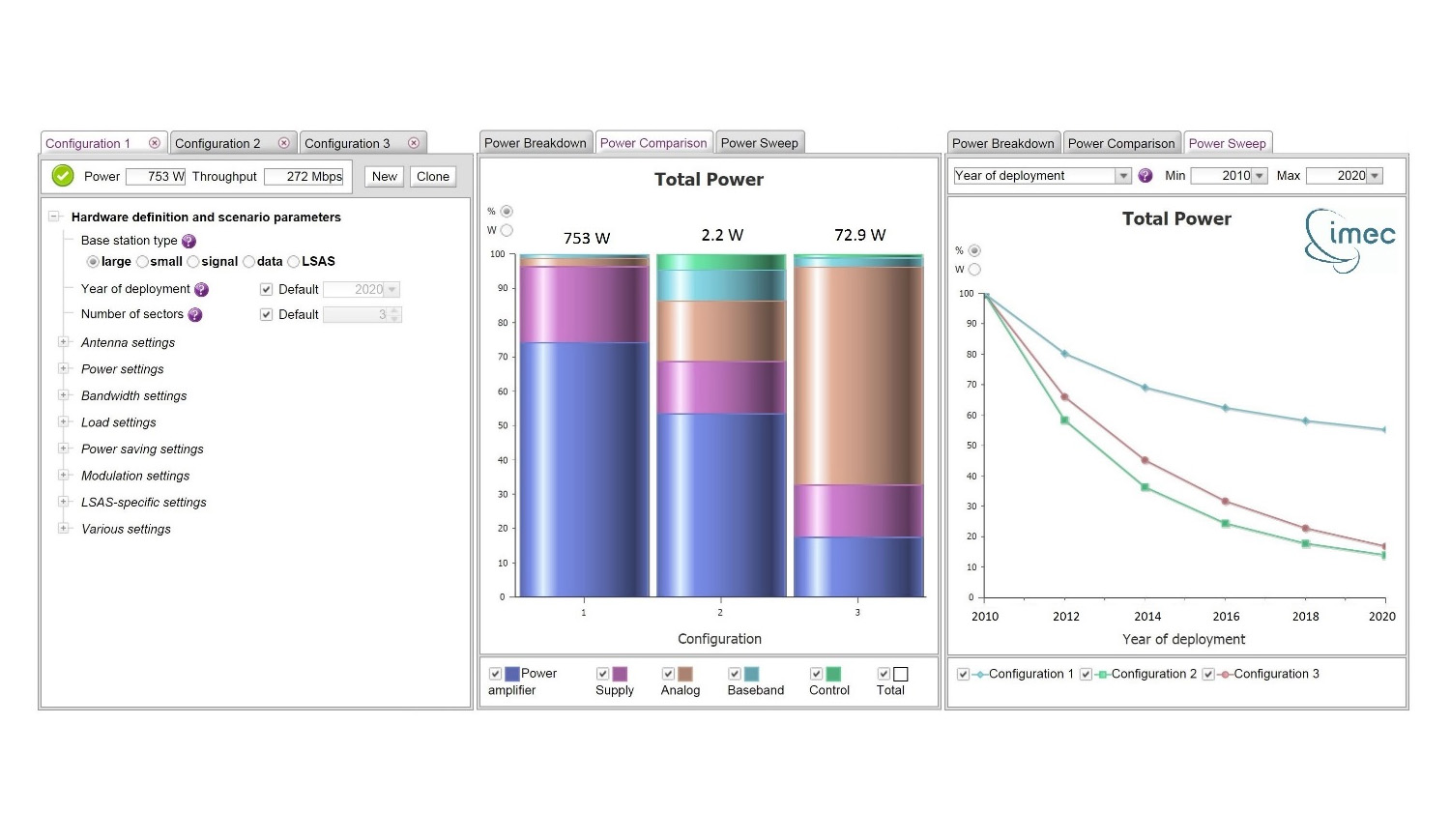Model to minimise the power consumption of mobile networks
At a celebratory event in New York City to announce the final results of the GreenTouch consortium’s five years of work, imec unveiled an advanced power model that provides a realistic prediction of the power consumption of present and future cellular base stations, which are vital to the mobile networks used by millions of people worldwide each day. The model supports a broad range of operating conditions and cellular base station types, covering both conventional and disruptive base station architectures, and incorporates hardware technology forecasts. The model is available as a free, online web tool for network providers and the research community.
Today’s mobile networks consume a tremendous amount of power. To support the burgeoning growth of communications networks in a sustainable and economically viable way, GreenTouch was founded in 2010, with the goal of fundamentally transforming communications and data networks and significantly reducing the carbon footprint of ICT devices, platforms and networks. Imec, a member of the consortium from the start , has been focusing its R&D on the power consumption of the cellular base station. Base stations currently consume more than 80% of the total mobile network. And this number will only rise with increases in data traffic and support of new services for 5G and the IoT. Therefore, addressing the power consumption of these base stations is critical to minimise future energy consumption.
To enhance the energy efficiency of the base stations, imec developed a power model to quantitatively forecast the power consumption of present and future cellular base stations. The algorithmic tool supports the development of more energy flexible base stations and the realisation of more energy efficient networks. It enables network providers and researchers to make the best choice in terms of network architecture and deployment, and to define the hardware technology and base station types that improve energy efficiency.
The model supports a broad range of base station architectures, covering conventional macro and pico cells, and also more disruptive architectures, such as massive MIMO implementing hundreds of antennas. It calculates the power consumption of the five main components of the base station: the power amplifier, the analogue front-end, the digital baseband, the control and network backhaul and the power systems. Moreover, it incorporates hardware technology forecasts up to the year 2020, at material, component and architectural levels, to predict the consumption and flexibility offered by future base stations.
 Imec’s advanced power model provides clear design guidelines for component and base station manufacturers. Network providers and operators can use the tool to gain knowledge to develop network concepts and deployment strategies for their current and future networks. For the research community, it provides a common reference for the power consumption of cellular base stations.
Imec’s advanced power model provides clear design guidelines for component and base station manufacturers. Network providers and operators can use the tool to gain knowledge to develop network concepts and deployment strategies for their current and future networks. For the research community, it provides a common reference for the power consumption of cellular base stations.
“Within the GreenTouch consortium, imec’s advanced power model was extensively used to study the impact of implementing future hardware technologies,” commented Björn Debaillie, GreenTouch Project Co-ordinator, imec. “We observed a power gain up to 80% for pico cell and massive MIMO base stations between 2010-2020 and up to 40% for macro cell base stations. Imec’s model revealed that base station types with a high portion of digital baseband consumption will gain more from the technology evolution compared to base stations types in which the power amplifier is the main consumer, such as macro cells. We also observed a reduced power gain towards 2020 for all base station types, confirming that disruptive hardware technologies are required after 2020 to maintain the evolution of power reduction.”
To stimulate its global usage, imec offers the model as a free online web-tool via its website.





